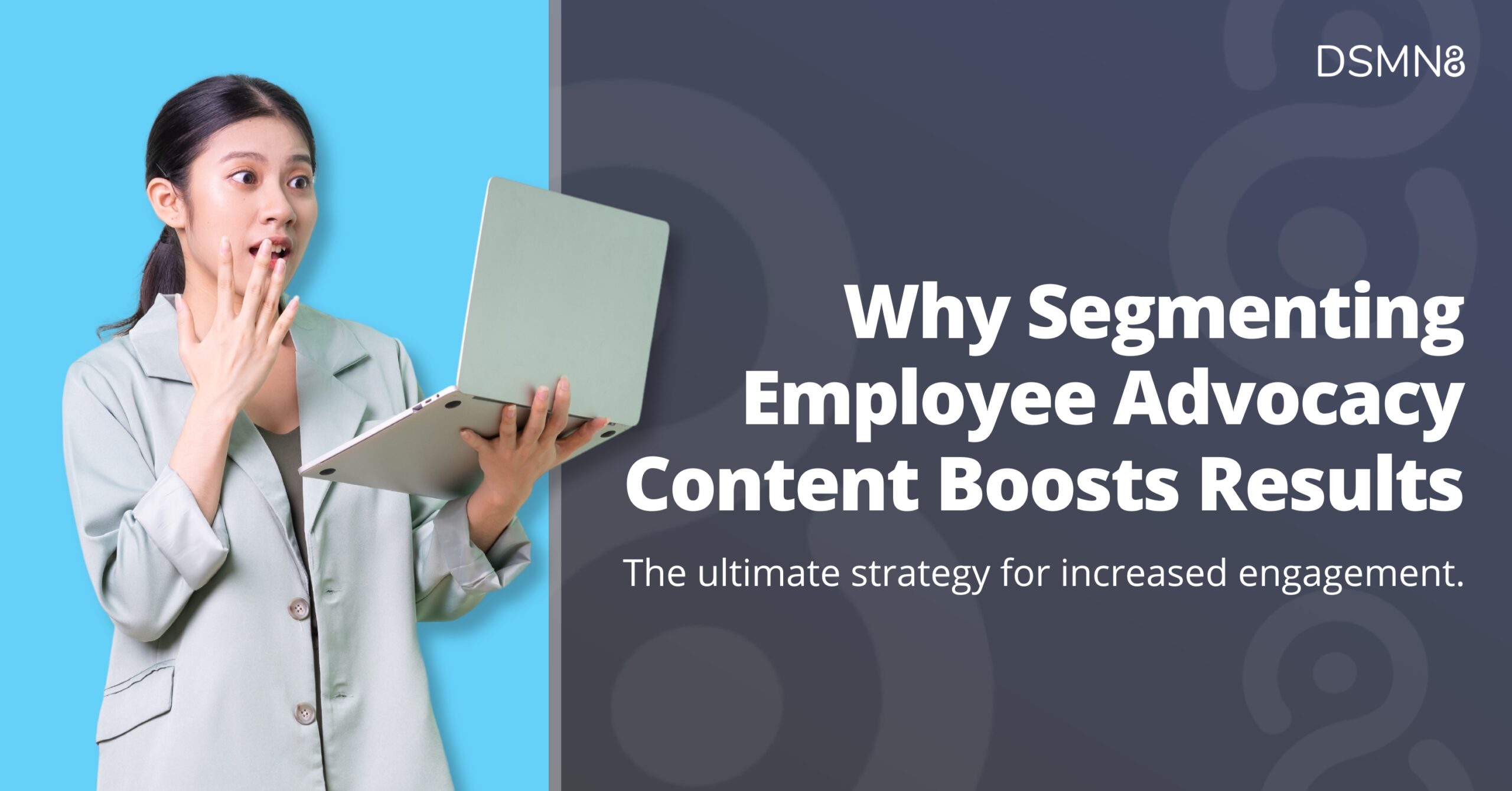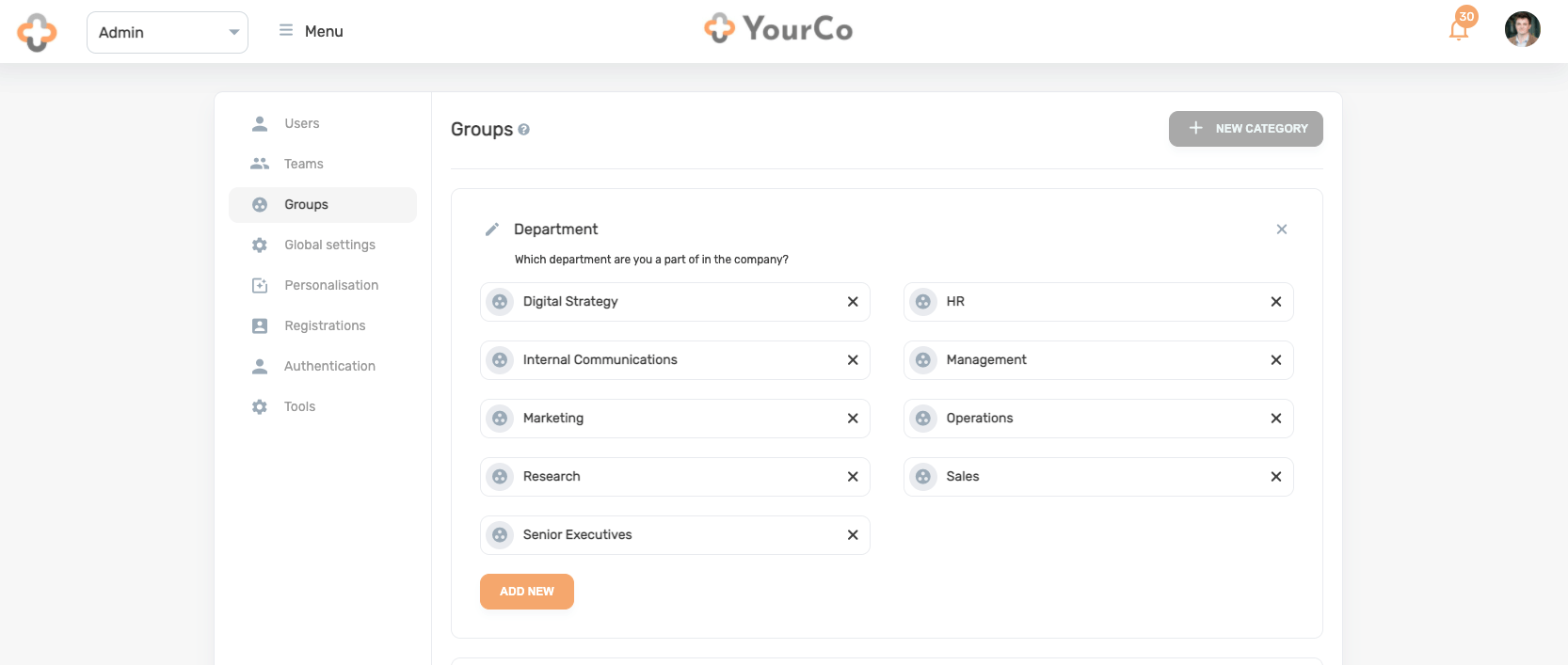
Employee advocacy is one of the most powerful tools businesses can use to expand their reach and credibility. When employees share company content on social media, it amplifies your message authentically and with far greater engagement than traditional brand channels.
But one-size-fits-all advocacy programs can fall flat 🥱
Generic content that doesn’t consider your employees’ diverse roles, interests, and audiences leads to lower participation rates and missed opportunities.
The solution? Segmentation.
In this post, we’ll explore why segmenting your employee advocacy content is essential, how it boosts program success, and how you can effectively do it to drive better results.
Let’s go! 👇

Why Segmenting Employee Advocacy Content Matters
1. Increased Relevance for Audiences
Your employees’ social media networks are not a monolith.
They include colleagues, peers, potential clients, job seekers, and personal connections. Each group has unique interests and needs.
Tailoring advocacy content to specific roles or teams guarantees that the posts your employees share are actually relevant to their audience.
For example, a sales professional’s network could be interested in industry insights or customer success stories, while an HR leader’s network might engage more with employer brand content.
2. Higher Employee Engagement
Employees are much more likely to take part in advocacy programs when the content aligns with their professional roles and personal interests.
Segmenting content removes the guesswork, making it easier for employees to share posts that resonate with their networks.
📢 Remember that content should provide value for employees, not just your company.
When employees feel that the content speaks to their expertise or passions, their advocacy feels more authentic, and their willingness to share increases.
3. Better Results and ROI
Tailored content on social media leads to higher engagement rates, broader reach, and more meaningful interactions between your employees and target audience.
Why?
The more relevant the content is for your employees, the more appropriate it will be for their networks. As a result, their posts are more likely to generate likes, comments, clicks, and shares.
Additionally, providing industry-specific content helps position your employees as thought leaders, enhancing both their personal brand and your company’s reputation.
How to Segment Employee Advocacy Content
To reap these benefits, you need to take a thoughtful approach to segmenting your program.
Ideally, you plan this out at launch, but late is better than never!
Here’s a quick step-by-step guide 👇

1. Define Your Criteria
First, you’ll need to understand the different groups within your organization that need content and the audiences they’re connected with.
Key criteria could include:
- Role/Team: Consider the content needs of sales, marketing, HR, customer support, and other teams.
- Seniority: Leaders often share strategic insights and thought leadership, while entry-level employees might prefer company culture content and industry news.
- Region: Regional teams may need localized content to reflect cultural nuances, local events, or market-specific updates.
- Language: If your company operates globally, providing content in multiple languages can boost participation and be more helpful.

2. Create a Content Strategy for Each Segment
Once you’ve identified your segments, the next step is to craft a content strategy that meets their needs.
Create a content list that serves each segment or persona, including examples. Refer to this when curating content and share it with other admins or curators in your team.
For example:
- Sales Teams: Focus on customer testimonials, product updates, and industry news that can spark conversations with prospects.
- HR Teams: Prioritize content showcasing your company culture, employee spotlights, and recruitment initiatives.
- Marketing Teams: Share thought leadership pieces, creative campaigns, and brand-building content.
Match content themes to specific teams or roles to empower your team to share posts that align with their day-to-day responsibilities and professional goals.

3. Curate Content
Tailored content isn’t just about themes; it’s also about delivery.
When you’re curating content, providing multiple post captions is essential.
If you only take one thing away from this article, let it be this:
Provide five different social media captions for every piece of content.
Adjust the tone of each caption to match different employee segments. For instance, executives may prefer formal, data-driven posts, while marketing employees may resonate with a more casual tone with emojis and hashtags.
Providing these captions reduces the amount of effort required from your advocates (and thus increases participation), while ensuring that your entire team isn’t spamming social media with identical content 👀
Employees can share the post as written, adjust the copy to sound more like them, or use it as a starting point to create an original post.
For best results, encourage your advocates to customize the content. But some will be too busy, and that’s okay.
To learn more about employee advocacy content, check out the podcast episode below:
How DSMN8 Makes Segmenting Employee Advocacy Content Seamless
When it comes to running an employee advocacy program, the right tools can make all the difference.
DSMN8 is designed to help you seamlessly manage and segment content, ensuring every employee has access to posts that align with their role, audience, and interests.
Here’s how DSMN8 makes segmentation simple and effective:

1. Organize Employees into Teams
DSMN8 allows you to create Teams that employees can join based on their roles, departments, or areas of focus. For example:
- Sales teams can access customer-focused case studies and product updates.
- HR teams can share employer branding content and job postings.
- Employees in France can find content in French.
For more exclusive content, you can create Restricted Teams, such as for board members or executives. These groups can receive tailored content that aligns with their unique responsibilities and visibility.

2. Streamline Content Distribution with Groups
Groups provide a further layer of segmentation, allowing you to organize employee advocates in a more granular way.
For example, you could have a Sales Team, but then create Groups for salespeople in different markets.
You could also use this to segment content by topic, creating Groups such as ‘Industry News’, ‘Product Updates’ or ‘Corporate Communications’.
Mandatory Groups ensure essential content reaches everyone in key roles or regions. This feature helps ensure that the most critical updates and campaigns reach the right people.

3. Highlight Strategic and Evergreen Content
Not all content is created equal, and DSMN8 helps you prioritize what’s most important:
- Strategic Content: Highlight posts that align with your company’s high-level goals, such as announcements or major product launches.
- Evergreen Content: Tag content that has long-term value, such as key case studies or brand storytelling posts, so employees always have access to relevant, shareable content.

4. Categorize Content by Events and Campaigns
DSMN8 also makes it easy for you to organize content into categories for specific Events and Campaigns.
Whether it’s a product launch, an upcoming conference, or a recruitment campaign, employees can easily find and share the right content for the moment.
This ensures employees stay on-message during time-sensitive initiatives, boosting the overall effectiveness of your campaigns.
And all of this can be monitored in your analytics dashboard, making it easy for you to understand the impact employee content has on every event or campaign. UTM tracking is automatically added to links shared, enabling you to track clicks in Google Analytics and other tools.

5. Executive Influencers
Senior leaders play a critical role in employee advocacy, and DSMN8 is designed to help you manage their unique needs.
You can provide tailored content for individual Executive Influencers within DSMN8. This helps them maintain a consistent presence on social media, aligning their personal brands with your company’s strategic goals.
Plus, the platform’s popular Boost Post feature makes it easy for other employees to like and share key posts by your executives 👏
By leveraging DSMN8’s segmentation tools, you can create a tailored employee experience, ensuring they receive content aligned with their roles and audiences.
Ready to explore the full platform? Book a demo.
Don’t have enough time to manage all of this content yourself? Explore DSMN8’s Managed Services.

Results You Can Expect from Segmenting Employee Content
When done well, segmentation transforms your employee advocacy program from a blanket approach into a finely tuned content machine 💪
Here’s what you can expect to see:
- Increased Participation: Employees are more likely to share content that feels relevant to their roles and interests.
- Improved Social Media Engagement: Tailored posts resonate more with audiences, resulting in higher engagement rates.
- Employees Become Thought Leaders / Influencers: Employees sharing specialized content can position themselves—and your company—as experts in their fields.
Ultimately, segmentation doesn’t just boost metrics; it builds stronger alignment between your employees’ personal brands and your company’s goals 🤝
By segmenting your advocacy content, you’ll create a program that’s easier for employees to participate in and far more effective.
With a thoughtful approach, you can drive meaningful results for both your employees and your business.
Additional Resources
More resources to help manage your employee advocacy program effectively:
Ready to see the difference tailored advocacy content can make to your program?
Book a demo with DSMN8.
Take the first step toward smarter, more effective employee advocacy!
Emily Neal
SEO and Content Specialist at DSMN8. Emily has 10 years experience blogging, and is a pro at Pinterest Marketing, reaching 1 million monthly views. She’s all about empowering employees to grow their personal brands and become influencers.



